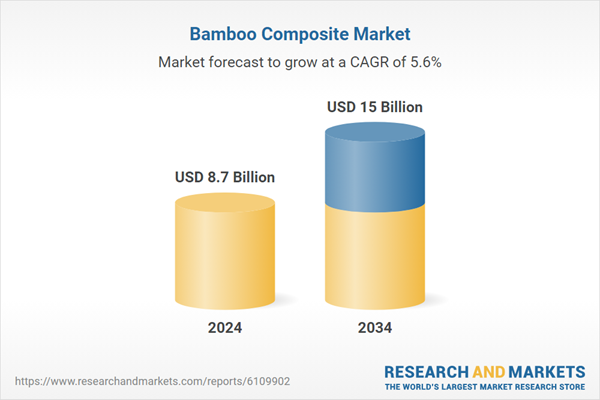Global initiatives promoting renewable resources and environmental protection continue to encourage bamboo cultivation and utilization. Strong government-backed programs promoting sustainable agriculture and carbon capture are also contributing to the bamboo composite industry's growth. Bamboo’s carbon-storing capabilities do not diminish after harvest, offering long-term environmental benefits during and after construction. As a result, the push for greener infrastructure and low-emission construction materials continues to drive significant interest in bamboo composites across industries such as construction, furniture, and infrastructure.
In 2024, the bamboo-based engineered panels segment represented a 28.4% share. These panels have gained popularity due to their versatile applications in furniture, flooring, and decorative interiors. Their combination of structural strength and aesthetic appeal makes them especially suitable for green building initiatives. Since they carry a low carbon footprint, they align well with sustainability goals and certification standards. Their durability, combined with a natural appearance, makes them attractive for both commercial and residential interior applications.
The extrusion segment accounted for 31.3% share in 2024, becoming the most widely used production method for bamboo composites. This method allows continuous output of uniform composite profiles, making it highly scalable and resource efficient. Its ability to produce long, homogeneous bamboo components is well-suited for outdoor uses such as fencing, decking, and exterior cladding. The extrusion process helps minimize material waste while allowing for precise control over surface texture, density, and finish - critical elements for outdoor performance. Resistance to moisture, UV exposure, and warping further boosts the suitability of extrusion-based composites for harsh environmental conditions.
United States Bamboo Composite Market was valued at USD 1.9 billion in 2024. The country’s leadership position is supported by a strong push for sustainable construction practices and widespread adoption of eco-certified materials. Bamboo-based composites are gaining ground in various applications, from structural panels and cabinetry to flooring and decking. Public and private sectors alike are embracing low-carbon materials to align with environmental goals. Federal and state-level incentives for carbon reduction have accelerated the market’s transition toward green infrastructure. In addition, consumers are becoming increasingly conscious of product sustainability throughout the life cycle, boosting demand for bamboo alternatives in remodeling and home improvement projects.
Leading companies operating in the Global Bamboo Composite Market include Smith & Fong, Moso International B.V., Dasso Group, Greenlam Industries, and Teragren. Market leaders in the bamboo composite industry are adopting a mix of innovation and sustainability-focused strategies to strengthen their market position. These companies are investing in R&D to create next-generation bamboo composites with enhanced durability, weather resistance, and aesthetic flexibility. Many are entering strategic partnerships with construction and interior design firms to broaden application scopes.
Localization of production and sourcing helps them reduce logistics costs and carbon emissions while supporting domestic supply chains. Firms are also working toward international green certifications to appeal to environmentally conscious customers. Brand differentiation through product customization and innovation in manufacturing techniques, such as advanced extrusion, help companies penetrate premium market segments and secure long-term growth.
Comprehensive Market Analysis and Forecast
- Industry trends, key growth drivers, challenges, future opportunities, and regulatory landscape
- Competitive landscape with Porter’s Five Forces and PESTEL analysis
- Market size, segmentation, and regional forecasts
- In-depth company profiles, business strategies, financial insights, and SWOT analysis
This product will be delivered within 2-4 business days.
Table of Contents
Companies Mentioned
- Bamboo Living
- Dasso Group
- EcoPlanet Bamboo
- Greenlam Industries
- Moso International B.V.
- Smith & Fong
- Teragren
- Xingli Bamboo Products
- Zhejiang Yongyu Household
Table Information
| Report Attribute | Details |
|---|---|
| No. of Pages | 220 |
| Published | June 2025 |
| Forecast Period | 2024 - 2034 |
| Estimated Market Value ( USD | $ 8.7 Billion |
| Forecasted Market Value ( USD | $ 15 Billion |
| Compound Annual Growth Rate | 5.6% |
| Regions Covered | Global |
| No. of Companies Mentioned | 9 |









